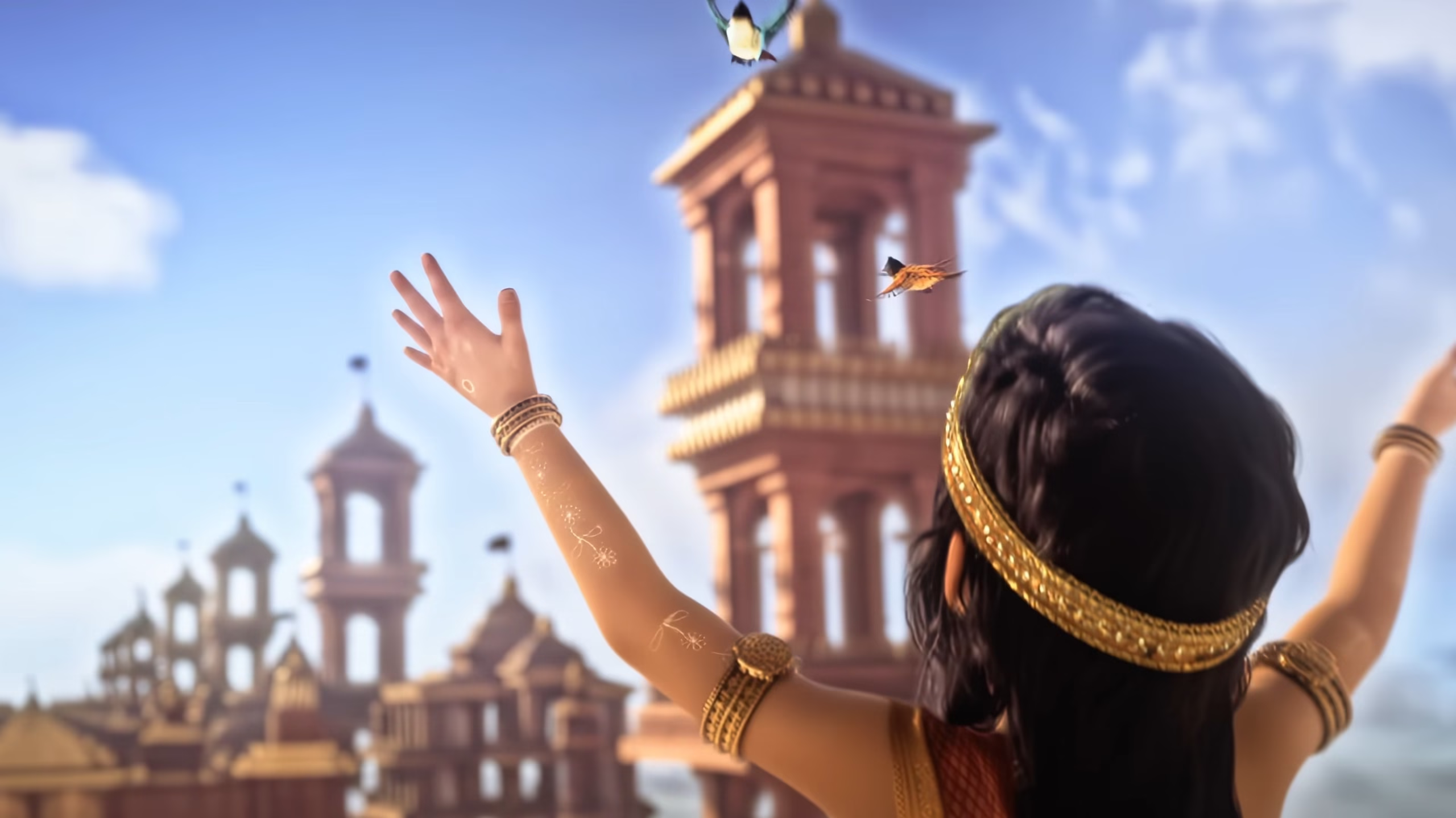Breathing New Life Into Ancient Legends
Mahavatar Narsimha, directed by Ashwin Kumar and produced by Hombale Films, brings the legendary battle between good and evil to the screen in a way Indian animation has rarely attempted. With larger-than-life visuals and a spiritual backbone, the film boldly blends mythology with cinematic scale.
But does the execution match the ambition? Let’s explore.
Faith, Fury, and Family at the Core
The plot follows the powerful demon king Hiranyakashipu, whose ego is matched only by the invincibility granted by a divine boon. Ironically, his greatest threat isn’t an enemy from the outside — it’s his own son Prahlad, whose devotion to Lord Vishnu sets up an emotional, ideological clash.
The arrival of Narasimha, the half-man, half-lion incarnation of Vishnu, forms the emotional and narrative peak of the film. It’s a tale steeped in lore, yet made to feel urgent and cinematic.
Where the Film Triumphs
The opening act hooks you with swift pacing and grand visuals. The Varaha avatar sequence stands out, combining action, emotion, and animation in a way that draws you into the mythical world instantly.
The climax — the moment everyone anticipates — doesn’t disappoint. Narasimha’s transformation and the showdown with Hiranyakashipu are thrilling and visually dramatic. Composer Sam C S deserves special credit for elevating these moments with an evocative score.
The voice performances are natural and seamless, grounding the characters and supporting the storytelling without distraction.

Where the Magic Slips
Despite its spiritual depth, the film hits a mid-section lull. After a strong start, the narrative loses momentum, and some emotional scenes fail to leave a lasting impact. The subplot involving Holika feels under-explained and slightly confusing.
While the animation is strong in key scenes, inconsistencies creep in, especially in group shots and transitional moments. For a project of this scale, viewers may expect smoother visuals across the board.
The language style — with its heavy use of archaic Sanskrit terms — might alienate younger viewers unfamiliar with traditional phrasing. A more modern script could’ve helped the film reach wider audiences.
A Myth Reimagined With Purpose
What makes Mahavatar Narsimha stand out is its ambition. Few Indian films have attempted to bring such iconic spiritual stories to animated life on a theatrical scale. Director Ashwin Kumar shows clear vision, even if the storytelling wavers.
The film doesn’t just aim to entertain — it aims to reignite interest in our mythology. And while it doesn’t always strike the right emotional chords, it’s a sincere attempt that signals a new direction for Indian animated cinema.
Final Verdict
Mahavatar Narsimha delivers spectacle, spiritual drama, and a visually rich experience — even if it struggles with pacing and polish. Watch it for the Varaha and Narasimha sequences, which capture the essence of the myth with power and style.
It’s a promising start to what could be an exciting mythological universe in Indian animation — and a reminder that our epics still have cinematic magic left to offer.
Bullseye Rating:★★★ (3/5 stars)
Mahavatar Narsimha is now playing in theatres.
